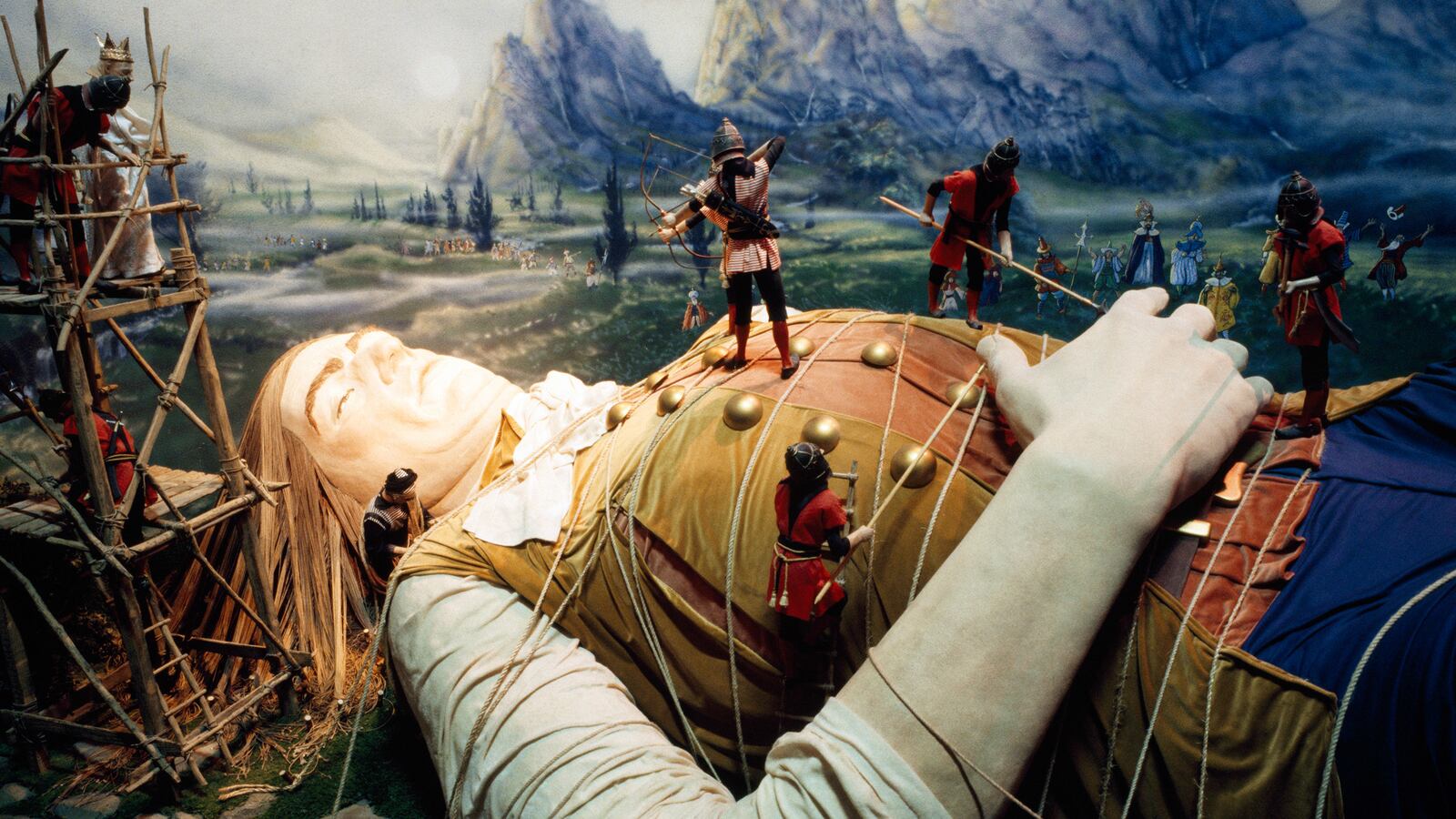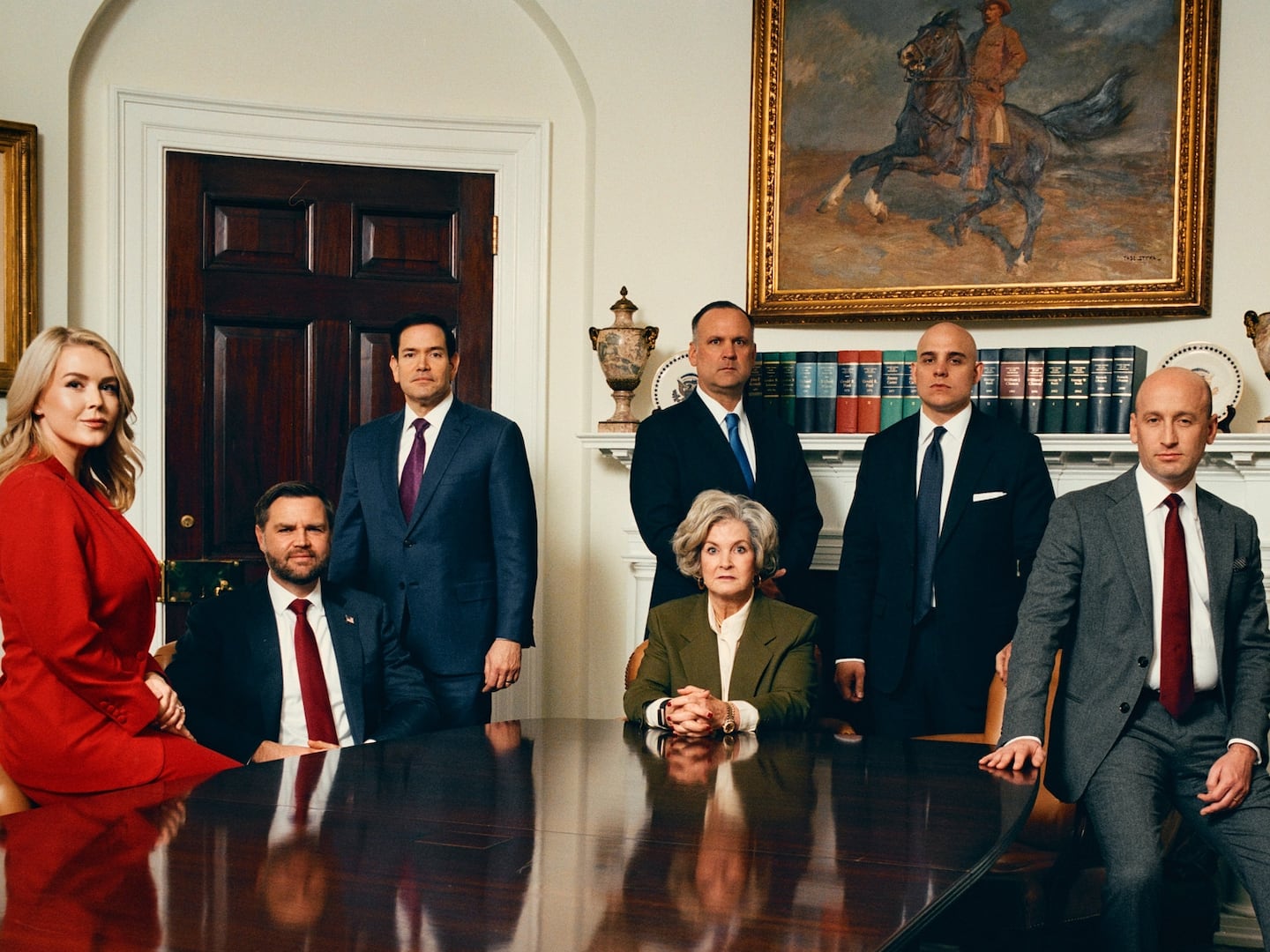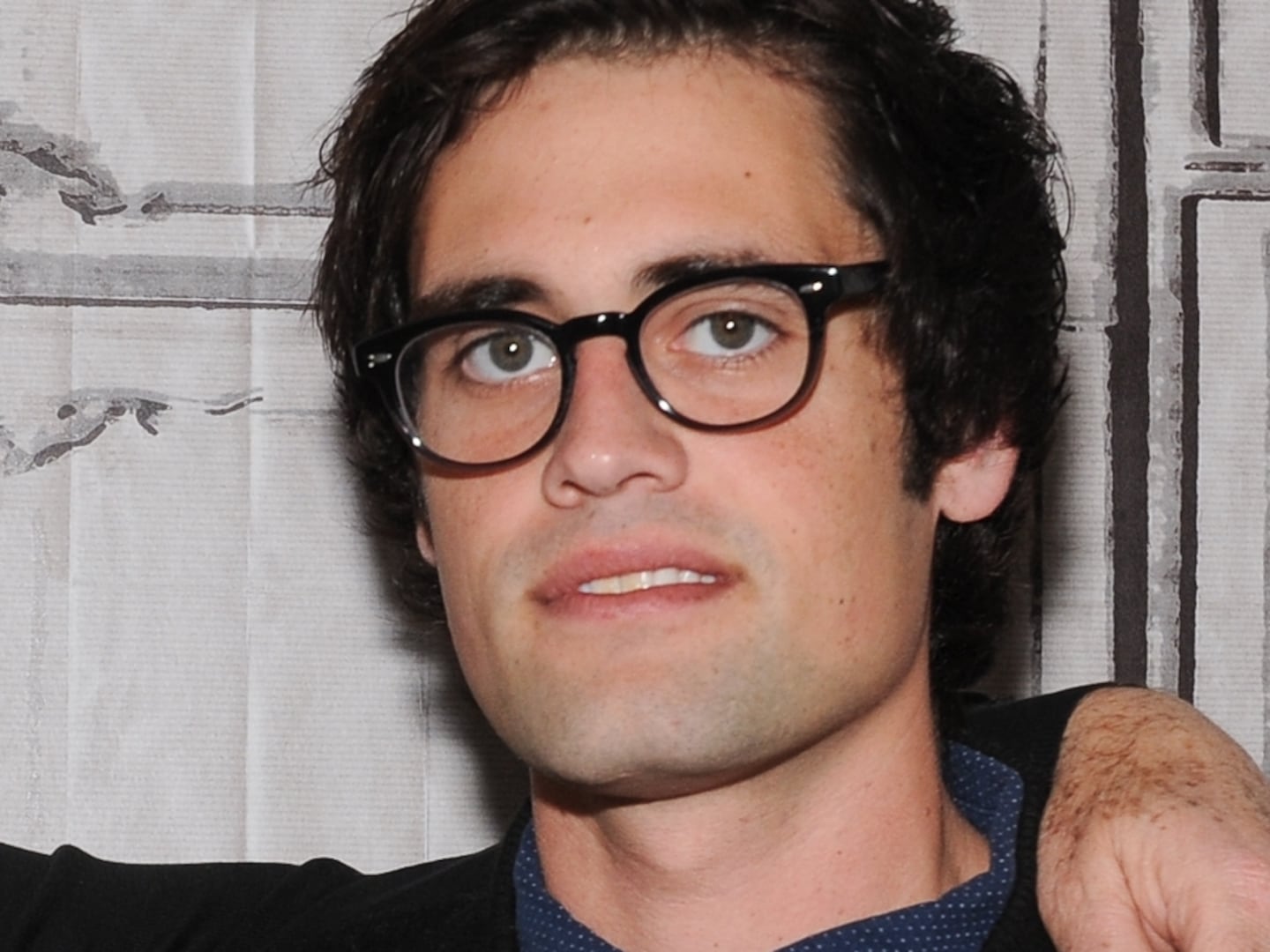On Friday the Apple watch will launch on a million wrists. The last time a timepiece sparked such a flummery of excitement was 300 years ago when the Lilliputians laid eyes on the pocket watch of the “great man mountain” in Jonathan Swift’s 1726 satirical masterpiece Gulliver’s Travels. The poet Alexander Pope hailed the novel as “absolutely original, unequaled, unexampled,” sounding just like Apple CEO Tim Cook introducing his smart watch today.
Readers may recall the scene in which the swarm of six-inch-high Lilliputians stare in mesmerized fascination as the shipwrecked Lemuel Gulliver draws out his precious silver watch from his fob pocket. A babble of speculation breaks out among the learned men on the mysterious engine’s components and uses. Every manner of “various and remote” theory is advanced. Is it a God? Is it an animal? Why does it make so loud a noise? What does it do? The delicate description of the watch as seen through the marveling eyes of the Lilliputians is one of the most outstanding passages in the novel, done so exquisitely that even Swift’s mercurial bête noir Dr. Samuel Johnson conceded it was of “very fine merit” indeed.
“Out of the right fob hung a great silver chain, with a wonderful kind of engine at the bottom. We directed him to draw out whatever was at the end of that chain; which appeared to be a globe, half silver, and half of some transparent metal; for, on the transparent side, we saw certain strange figures circularly drawn, and thought we could touch them, till we found our fingers stopped by the lucid substance. He put this engine into our ears, which made an incessant noise, like that of a water-mill: and we conjecture it is either some unknown animal, or the god that he worships; but we are more inclined to the latter opinion, because he assured us, (if we understood him right, for he expressed himself very imperfectly) that he seldom did anything without consulting it. He called it his oracle, and said, it pointed out the time for every action of his life.”
The Lilliputians’ wide-eyed wonder at the engine’s dial, numerals, circular shape, glass face, and loud ticking is no different from the way the world is drooling over every minute facet of the Apple watch, from its sapphire-coated display and customized straps to its sidewinder, apps, battery life, taptic engine, heart rate monitor, and other apparatus. However, unlike the Lilliputians who had never seen a watch before, we don’t even have the fig leaf of ignorance to dignify our forensic rapture. But Swift the brilliant political pamphleteer and propagandist would have instinctively gauged how skillfully Apple’s pamphleteers create the illusion of Edenic newness to bring out the Lilliputian in us all.
In its time, Gulliver’s watch was a technical marvel—it sported a minute hand, a mechanism introduced only in the late 17th century. Of course, unlike the Apple watch, it did not store 200 songs. Nor did it adjust automatically to a new time zone, a convenience the globetrotting Gulliver would have welcomed. But there’s one surprising metric in which Gulliver’s watch trumps the Apple: it was waterproof. Despite the soaking it got in the salty seas around Lilliput, it continued to tick as majestically as a watermill. In contrast, the Apple team has gone through an agonized dance to categorize their watch as “water resistant” but not “waterproof.” In reality, it’s unlikely that Gulliver’s watch could have been waterproof. Swift may have either bungled that detail or glossed over it for the purpose of the story—a silent watch with a stopped minute hand doesn’t create the same frisson as a working one. Entranced by the movement of the minute hand, the Lilliput emperor asks Gulliver to hand over his watch and commands “two of his tallest yeomen of the guards to bear it on a pole upon their shoulders, as draymen in England do a barrel of ale”—an exit the techno-thespian Steve Jobs would have applauded.
What would a fierce moralist and science skeptic like Jonathan Swift, the Dean of St. Patrick’s cathedral in Dublin, have made of our craving for elegant electronic devices, especially those branded with the forbidden fruit? Curiously enough, Swift had his very own “apple” connection. As a young contemporary of Sir Isaac Newton, he lived and wrote at the center of the post-apple world. But the two creative giants were not friends. Swift was suspicious of the scientific revolution and was quick to dismiss new innovations as contrivances. His scorn is manifestly clear in the scene in which Gulliver visits Lagado’s Grand Academy, an over-the-top caricature of Newton’s Royal Society. As people starve outside the Academy’s gates, the scientists remain immersed in dubious research such as extracting sunbeams from cucumbers, turning human excrement back into food and ice into gunpowder. One crazy math professor who believes in ingestible technology makes his students eat wafers with mathematical propositions and demonstrations written on them in a special cephalic ink that he hopes will imprint itself permanently on the brain. But as Gulliver smugly observes, his experiments fail miserably since the students promptly vomit up the nauseous bolus.
As someone who loathed not just new-fangled science but the emerging breed of city financiers and joint-stock companies, Swift might well have nursed a strong prejudice against an American multinational whose very first logo had Sir Isaac Newton sitting under a tree munching an apple. But he was neither an idiot nor a hypocrite. An imaginative powerhouse like him would have passionately admired the utilitarian genius and beauty of modern technology, without feeling the need to turn into a cultist singing hosannas from its songbook. The unwholesome labor-and-supply chain—“blood and treasure” to use Swift’s pet phrase—that produces these stylish phones, watches, and computers would have been the target of his saeva indignatio. As the satirist who scathingly proposed that the problem of the Irish famine could be solved by eating babies “hot from the knife,” Swift can be imagined whipping out an iPad from his clerical gown to hammer out one of his thundering polemics such as a 60-page satirical pamphlet titled A Modest Proposal for Preventing the Children of Poor People from being a Burden to their Parents or the Country, by sending them to Factories to Manufacture Smart Goods.
While the iPod would have left him cold—“I know nothing of music; I would not give a farthing for all the music in the universe”—Swift would have been surprisingly adept at the compressed argot of texting. Fond of word games, he once wrote, “D R L n U r a B u t. I s tm U a D t” (Darling you are a beauty. I esteem you a deity), a rhymed abbreviation that would, IMHO, make any thumb-literate yahoo today envious. In the case of the Apple smart watch, though, the Dean would have been completely hooked.
Swift’s life was dominated by his watch and his walk. Like Gulliver, he was so addicted to consulting his watch that he walked around holding it in his hand or had it facing him on the table. To use an Apple term, Swift was a natural born “Glancer.” He owned at least two gold watches, a plain one and a state-of-the-art “repeating watch” made by the famous English clockmaker Daniel Quare.
Swift was equally obsessed with his daily walk, an indispensable exercise that helped him ward off the creeping melancholy to which he was vulnerable. He seldom walked “less than four miles, sometimes six, eight, ten, or more.” If it rained, he walked “as much through the house, up and down stairs,” and a friend once watched him pound violently up the great stairs of his Dublin mansion and down the back stairs in order to get his constitutional. He’s just the sort of fitness freak who’d fervently check the accelerometer in the Apple watch that measures how far the wearer walks.
If he were alive today, the bewigged Dr. Swift might well be found among the Appleistas queuing up for a smart watch, perhaps with the embarrassed acknowledgement, Je suis Lilliputian.
Nina Martyris has written for the Missouri Review and Dissent and the online sites of the Guardian, Harper’s, New Republic, Prospect, and Lapham’s Quarterly; and she is a regular contributor to the Los Angeles Review of Books.






